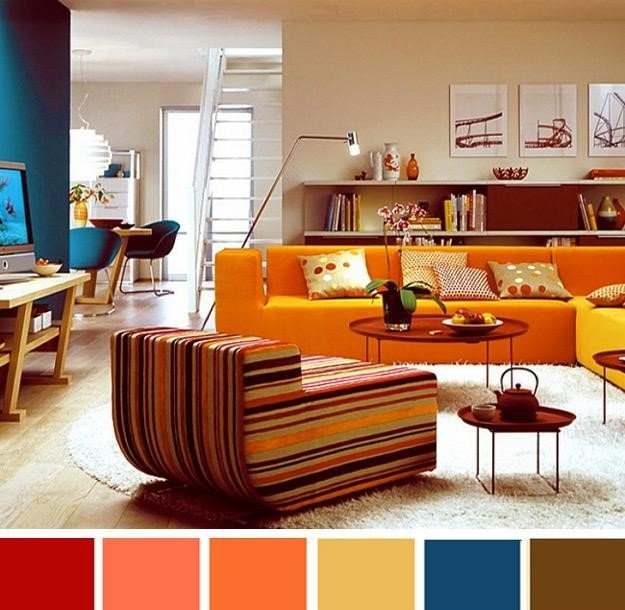Color psychology plays a crucial role in interior design, influencing our emotions, perceptions, and moods. By understanding the psychological effects of colors, you can create spaces that promote relaxation, productivity, or sociability, depending on your goals for each room. Let’s explore how different colors can impact the atmosphere of your home and guide you in choosing the right hues for every room.
1. Understanding Color Psychology
Color psychology studies how colors affect human behavior and emotions. Each color has unique psychological associations that can evoke specific feelings and perceptions:
- Blue: Often associated with calmness and serenity, blue is ideal for bedrooms and bathrooms, promoting relaxation and tranquility.
- Green: Symbolizing nature and growth, green can create a sense of harmony and balance in spaces like living rooms or home offices.
- Yellow: Known for its uplifting and energizing qualities, yellow is suitable for kitchens or dining areas, fostering optimism and creativity.
- Red: A bold and stimulating color, red can increase energy levels and appetite, making it suitable for dining rooms or areas where social interaction is encouraged.
- Gray: A neutral color that promotes stability and sophistication, gray is versatile and can be used in any room as a backdrop for other colors or accents.
- Purple: Often associated with luxury and creativity, purple can be used in bedrooms or creative spaces to stimulate imagination and introspection.
- White: Symbolizing purity and simplicity, white creates a sense of spaciousness and cleanliness, making it ideal for small rooms or areas with minimal natural light.
2. Choosing Colors for Different Rooms
a. Bedroom: For a restful atmosphere in the bedroom, consider soothing colors like soft blues, greens, or lavender. These colors promote relaxation and can help improve sleep quality.
b. Living Room: The living room is a space for socializing and relaxation. Opt for warm neutrals like beige or soft gray, which create a welcoming ambiance. Accent with pops of color like warm reds or oranges to stimulate conversation and energy.
c. Kitchen: In the kitchen, where creativity and energy are important, consider using shades of yellow or light greens. These colors can enhance appetite and create a lively atmosphere for cooking and dining.
d. Home Office: For productivity in a home office, choose calming colors like blues or greens to foster concentration and focus. Avoid overly stimulating colors like bright reds, which can be distracting.
e. Bathroom: In the bathroom, where relaxation and cleanliness are key, opt for cool blues or greens reminiscent of spa-like environments. These colors promote a sense of calmness and rejuvenation.
3. Using Color Accents and Combinations
While choosing a primary color for each room based on its function and desired atmosphere, don’t hesitate to incorporate color accents and combinations to add depth and interest:
- Color Accents: Use vibrant accents such as pillows, artwork, rugs, or curtains to introduce splashes of color that complement the room’s primary hue.
- Color Combinations: Experiment with color combinations using the color wheel. Complementary colors (opposite each other on the wheel) create dynamic contrast, while analogous colors (next to each other) offer a harmonious blend.
4. Lighting and Color Perception
Consider the impact of lighting on color perception within each room:
- Natural Light: Colors may appear brighter and more vibrant in rooms with ample natural light. Opt for lighter shades to maximize the brightness.
- Artificial Light: Warm or cool-toned artificial lighting can alter the appearance of colors. Test paint samples or fabric swatches under different lighting conditions to ensure the desired effect.
5. Personalizing Your Color Choices
Ultimately, the best colors for your home are those that resonate with your personal preferences and lifestyle. Consider factors such as your favorite colors, the overall aesthetic you wish to achieve, and how different colors make you feel when choosing hues for each room.
Conclusion
Color psychology offers valuable insights into how colors can influence the atmosphere and functionality of your home. By strategically selecting colors based on their psychological effects and your personal preferences, you can create spaces that are not only visually appealing but also promote comfort, productivity, and well-being. Whether you’re aiming to create a serene bedroom retreat or an energetic kitchen environment, understanding color psychology empowers you to make informed decisions that enhance your living experience.

